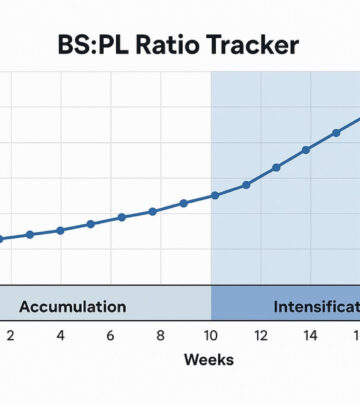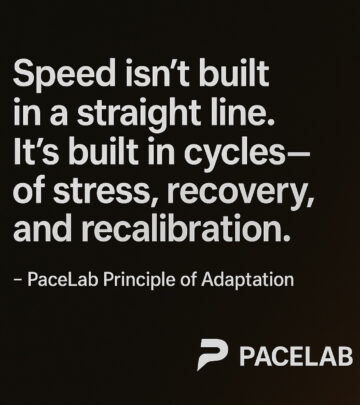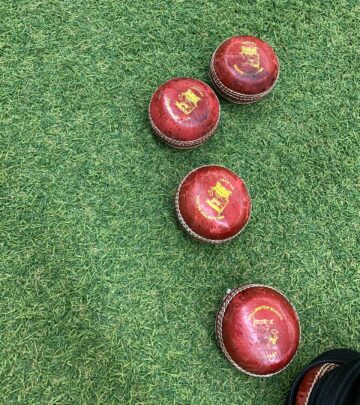Recharge Circuit: Fast Bowling Recovery Boosts CNS Readiness
Revitalize your CNS with explosive, low-load drills—Recharge Circuit fuels fast bowlers.

Image: Instagram
Fast bowlers know that power, speed, and explosive movement are essential on the field. Yet behind every delivery is an often-overlooked element of performance: central nervous system (CNS) recovery. The Recharge Circuit, a high-intensity, low-load training method, has emerged as a secret weapon designed to reset the neural drive, refill dopamine levels, and sharpen fast-twitch coordination without adding fatigue. Developed as part of the innovative PaceLab training system, this technique is transforming the recovery routines of fast bowlers worldwide. Celebrity coach and athlete Steffan Jones, renowned for his commitment to smart training, has embraced this method, further cementing its credibility in the world of cricket.
The Recharge Circuit challenges the traditional view of recovery. Instead of focusing solely on rest or volume-based workouts, it integrates explosive, short-duration drills into the recovery process. Typically lasting between five to ten minutes, this routine features exercises such as maximal-effort jumps, medicine ball throws, short sprints, and reactive movements. Importantly, each effort is interspersed with ample rest, usually between 45 and 90 seconds, to ensure that the CNS is not overloaded. This deliberate structure helps quickly reset neural pathways, stimulates dopamine release, and primes fast-twitch muscle fibers. The method is not intended to flush lactic acid or build muscle volume; rather, it artfully reboots the nervous system so that athletes can maintain speed and coordination.
For fast bowlers, where every delivery demands precision and explosive power, maintaining CNS readiness is crucial. Following a grueling session on the field or in the gym, bowlers can feel drained—a drop in dopamine levels often leaves them flat and less responsive. The Recharge Circuit counteracts this by using high-speed, low-load movements that reenergize the central nervous system and enhance coordination.
This method is particularly effective when implemented 24 to 48 hours after intense bowling or heavy gym work, during deload weeks, or in mid-week taper sessions. With a typical example including two to three sets of depth jumps to trigger a sprint, medicine ball chest passes, seated box jumps, and reactive pogo jumps, the circuit is crafted to reignite drive and maintain peak motor output. Fast bowlers who incorporate this routine can avoid the pitfalls of fatigue, ensuring they remain fast, fresh, and firing throughout the season.
The Recharge Circuit is deeply rooted in the PaceLab training philosophy, which emphasizes smart training over mere volume. Steffan Jones, a notable figure associated with this training approach, has been a strong advocate for innovative recovery methods since learning from renowned mentor Christian Thibaudeau back in 2008. Jones often highlights that embracing these modern training protocols is essential to unlock an athlete’s full potential. His endorsement adds a layer of legitimacy to the Recharge Circuit, as he continues to mentor emerging talents in fast bowling and overall athletic performance.
This perspective is reinforced by other PaceLab-related content circulating on social media. For instance, earlier posts under the hashtag #pacelab as well as detailed breakdowns like “Train Smarter for Maximal Speed: Strength That Transfers to Fast Bowling” underline the critical need for techniques that focus on system efficiency rather than sheer muscle mass. Unlike outdated training methodologies that overemphasize heavy loads and repetitive drills, the Recharge Circuit is part of a broader movement towards data-driven, neuromuscular recovery strategies that can be tailored to the unique demands of fast bowling.
Integrating this circuit into a fast bowler’s training regimen requires both discipline and an understanding of exercise sequencing. The drills are purposely high-speed and low-load so that the CNS remains stimulated without accumulating additional fatigue. During training sessions, coaches and athletes are advised to keep rest intervals generous to allow complete recovery between explosive efforts. This not only maximizes performance but also minimizes the risk of overtraining and injury.
Many in the coaching community have noted a significant improvement in performance once athletes begin to adopt the Recharge Circuit. The method has an immediate impact on speed, coordination, and overall motor performance. It is often introduced during key phases of the season, such as after a heavy training block or before important matches, to ensure that the athlete’s neural drive is at its optimum. In addition to direct performance benefits, the Recharge Circuit also fosters an advanced understanding of smart recovery principles. As discussed in other PaceLab Instagram posts like “Hip-Dominant Bowlers Cheat Technique” and “Light Ball Bowling and the Eccentric Load Puzzle,” the focus on coordinated, dynamic movement is a recurring theme in contemporary fast bowling training. These posts collectively advocate for training methods that support holistic athlete development while strategically mitigating fatigue.
Coaches are increasingly tailoring their programming to include not only strength and conditioning drills but also recovery circuits that directly address neural fatigue. This shift in training philosophy—from merely building muscle to optimizing performance at a neurological level—is seen as a game-changer in competitive fast bowling. When athletes learn to listen to their bodies and integrate recovery techniques such as the Recharge Circuit, they can better manage the cumulative effects of fatigue, ensuring consistent performance throughout demanding match schedules.
The benefits of the Recharge Circuit extend beyond just the physical. High-speed, low-load movements inherently stimulate the release of dopamine, a neurotransmitter crucial for motivation, focus, and motor drive. Without this dopamine boost, fast bowlers often experience diminished performance, as the neural signals essential for explosive movement weaken. By reactivating these pathways, the Recharge Circuit not only keeps the muscles primed but also sharpens cognitive and motor responses. In effect, the circuit helps maintain a state of readiness—a critical advantage when each bowling delivery can determine the outcome of a game.
By combining principles of neuromuscular recovery with explosive training, the method facilitates a balanced approach where intensity and rest work in concert. This balance is key to preventing the dreaded performance plateau and avoiding the so-called ‘Fatigue Cliff,’ where cumulative load gradually chips away at output until sudden performance collapse occurs. As echoed in other PaceLab insights, smart training involves not only rigorous drills but also a strategic recovery plan that respects the body’s limits.
In a sport where milliseconds can define success, the Recharge Circuit offers fast bowlers a robust method to maintain speed, accuracy, and explosive power over extended periods. By focusing on high-speed, low-load movements intermingled with adequate rest intervals, this method directly addresses the often-overlooked aspect of CNS recovery. Steffan Jones and other proponents of the PaceLab training system have demonstrated that when athletes trust in innovative recovery techniques, they open the door to breakthroughs in performance.
With growing evidence supporting its efficacy and endorsements from respected figures in athletic training, the Recharge Circuit is set to redefine how fast bowlers and coaches approach performance recovery. Embrace the technique, trust the process, and witness a transformation that truly reboots the CNS to fuel the fast, fresh, and firing spirit of the modern fast bowler.
Read full bio of Joyce


















